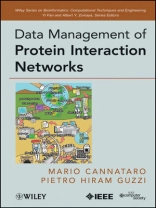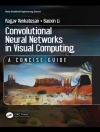Current PPI databases do not offer sophisticated queryinginterfaces and especially do not integrate existing informationabout proteins. Current algorithms for PIN analysis use onlytopological information, while emerging approaches attempt toexploit the biological knowledge related to proteins and kinds ofinteraction, e.g. protein function, localization, structure, described in Gene Ontology or PDB. The book discussestechnologies, standards and databases for, respectively, generating, representing and storing PPI data. It also describesmain algorithms and tools for the analysis, comparison andknowledge extraction from PINs. Moreover, some case studies andapplications of PINs are also discussed.
Innehållsförteckning
LIST OF FIGURES xiii
LIST OF TABLES xix
FOREWORD xxi
PREFACE xxiii
ACKNOWLEDGMENTS xxix
INTRODUCTION xxxi
ACRONYMS xxxiii
1 INTERACTOMICS 1
1.1 Interactomics and Omics Sciences / 1
1.2 Genomics and Proteomics / 4
1.3 Representation and Management of Protein Interaction Data /5
1.4 Analysis of Protein Interaction Networks / 5
1.5 Visualization of Protein Interaction Networks / 6
1.6 Models for Biological Networks / 7
1.7 Flow of Information in Interactomics / 8
1.8 Applications of Interactomics in Biology and Medicine /10
1.9 Summary / 11
2 TECHNOLOGIES FOR DISCOVERING PROTEIN INTERACTIONS13
2.1 Introduction / 13
2.2 Techniques Investigating Physical Interactions / 14
2.3 Technologies Investigating Kinetic Dynamics / 17
2.4 Summary / 18
3 GRAPH THEORY AND APPLICATIONS 21
3.1 Introduction / 21
3.2 Graph Data Structures / 22
3.3 Graph-Based Problems and Algorithms / 28
3.4 Summary / 31
4 PROTEIN-TO-PROTEIN INTERACTION DATA 33
4.1 Introduction / 33
4.2 HUPO PSI-MI / 34
4.3 Summary / 41
5 PROTEIN-TO-PROTEIN INTERACTION DATABASES 43
5.1 Introduction / 43
5.2 Databases of Experimentally Determined Interactions / 45
5.3 Databases of Predicted Interactions / 55
5.4 Metadatabases: Integration of PPI Databases / 62
5.5 Summary / 70
6 MODELS FOR PROTEIN INTERACTION NETWORKS 71
6.1 Introduction / 71
6.2 Random Graph Model / 72
6.3 Scale-Free Model / 73
6.4 Geometric Random Graph Model / 73
6.5 Stickiness Index (STICKY) Model / 74
6.6 Degree-Weighted Model / 74
6.7 Network Scoring Models / 75
6.8 Summary / 76
7 ALGORITHMS ANALYZING FEATURES OF PROTEIN INTERACTIONNETWORKS 79
7.1 Introduction / 79
7.2 Analysis of Protein Interaction Networks through Centrality Measures / 80
7.3 Extraction of Network Motifs / 81
7.4 Individuation of Protein Complexes / 88
7.5 Summary / 99
8 ALGORITHMS COMPARING PROTEIN INTERACTION NETWORKS101
8.1 Introduction / 101
8.2 Local Alignment Algorithms / 104
8.3 Global Alignment Algorithms / 109
8.4 Summary / 111
9 ONTOLOGY-BASED ANALYSIS OF PROTEIN INTERACTION NETWORKS113
9.1 Definition of Ontology / 113
9.2 Languages for Modeling Ontologies / 115
9.3 Biomedical Ontologies / 116
9.4 Ontology-Based Analysis of Protein Interaction Data /117
9.5 Semantic Similarity Measures of Proteins / 120
9.6 The Gene Ontology Annotation Database (GOA) / 122
9.7 Fussi Meg and Protein On / 123
9.8 Summary / 123
10 VISUALIZATION OF PROTEIN INTERACTION NETWORKS 125
10.1 Introduction / 125
10.2 Cytoscape / 126
10.3 Cyto MCL / 127
10.4 NAVi Ga TOR / 128
10.5 Bio Layout Express3D / 130
10.6 Medusa / 130
10.7 Pro Viz / 131
10.8 Ondex / 132
10.9 PIVOT / 132
10.10 Pajek / 133
10.11 Graphviz / 134
10.12 Graph Crunch / 134
10.13 Vis ANT / 135
10.14 PIANA / 136
10.15 Osprey / 136
10.16 c PATH / 137
10.17 PATIKA / 138
10.18 Summary / 139
11 CASE STUDIES IN BIOLOGY AND BIOINFORMATICS 141
11.1 Analysis of an Interaction Network from Proteomic Data /141
11.2 Experimental Comparison of Two Interaction Networks /143
11.3 Ontology-Based Management of PIN (Onto PIN) / 145
11.4 Ontology-Based Prediction of Protein Complexes / 149
12 FUTURE TRENDS 151
REFERENCES 157
INDEX 177
Om författaren
MARIO CANNATARO, Ph D, is Associate Professor of Computer Engineering at the Magna Græcia University of Catanzaro. Hisresearch explores bioinformatics, computational proteomics andgenomics, medical informatics, grid and parallel computing, andadaptive web systems. Dr. Cannataro has published three books andmore than 150 papers in international journals and conferenceproceedings.
PIETRO HIRAM GUZZI, Ph D, is Assistant Professor of Computer Engineering at the Magna Græcia University of Catanzaro. His research focuses on the analysis of proteininteraction networks and the use of biological knowledge encoded inontologies for modeling, querying, and analyzing proteininteraction networks.












